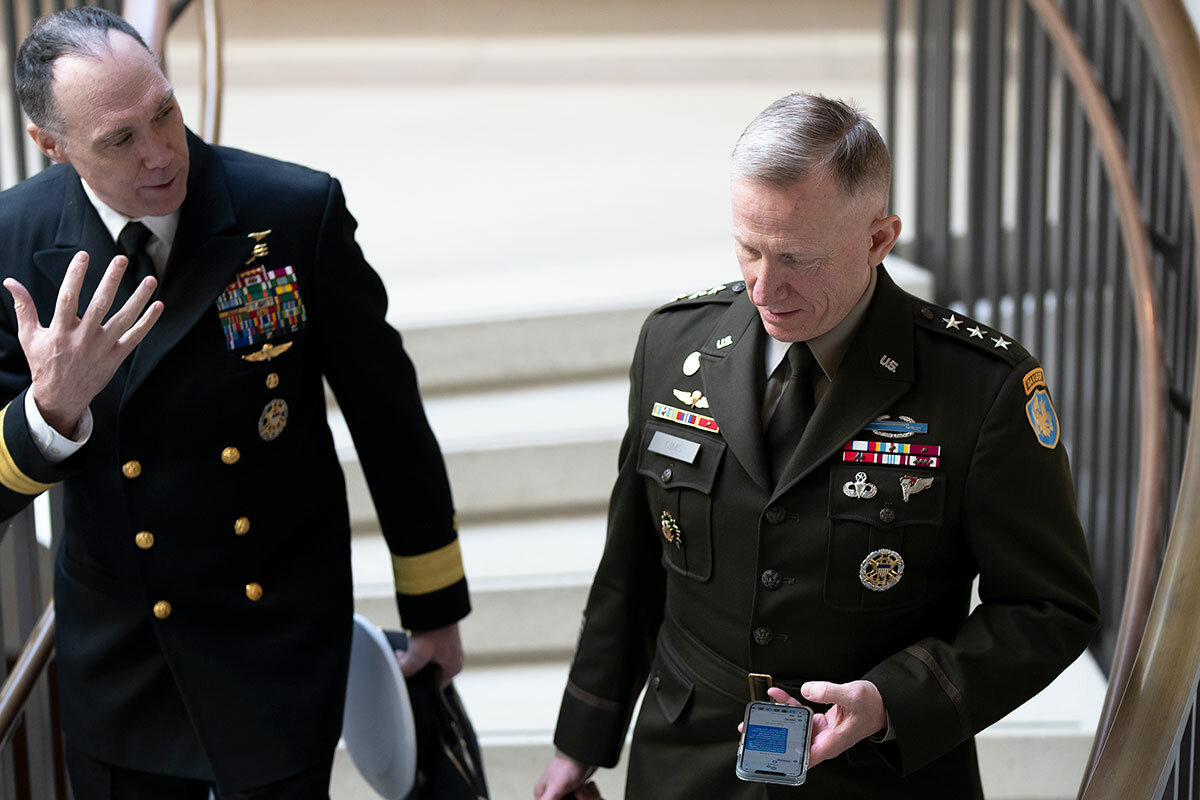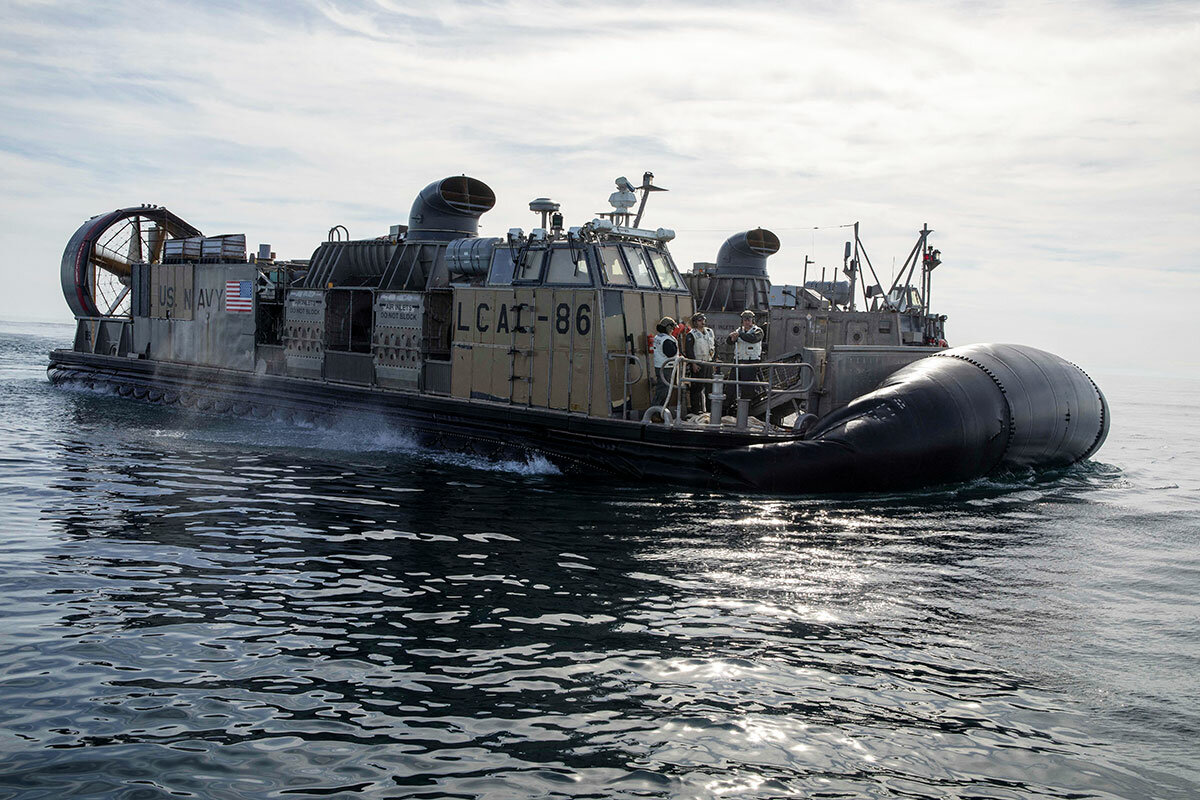Balloons and national security: What we know so far
Loading...
| Washington
The U.S. military’s unprecedented destruction of four objects floating through the upper reaches of North America’s atmosphere raises a difficult question: Is this stuff benign, or a genuine national security problem in the making?
From what we know now, the answer may be “both.” Current evidence released about the events of recent days has revealed a mixed picture. U.S. officials remain adamant that the first object was a large, sophisticated spy balloon from China. They have been careful to put the others in a different category, referring to them as smaller, less sophisticated devices traveling on lower-level winds.
But the spy balloon by itself remains a troubling portent for the Pentagon and U.S. defense overall, say some lawmakers, officials, and outside experts.
Why We Wrote This
Here’s what we are learning about just how many foreign objects, and what type, may be routinely coming into our airspace. Is this mostly an annoyance or a real national security problem that we have been ignoring?
The State Department last week said the balloon, which China insists was a wayward weather balloon, is part of a sophisticated effort that has involved overflights of more than 40 countries across five continents. In recent years, China has breached U.S. airspace with balloons on at least five separate occasions, said officials.
U.S. radars have been recalibrated to look for slow-moving balloon-like objects. That is one major reason more are suddenly being detected. But dealing with the threat in the long term may require more radars, the modernization of existing systems, and more aircraft for the North American Aerospace Defense Command, says retired Air Force Lt. Gen. David Deptula, former deputy chief of staff for intelligence, surveillance, and reconnaissance.
“These intrusions should be a wake-up call to rebuild our air and space defenses,” says retired General Deptula, now dean of the Mitchell Institute for Aerospace Studies, in an email.
In the short term, some of the U.S. reaction to the radar readings of the last week seems, if not an overreaction, then an abundance of caution in a fast-moving situation where information remains incomplete.
U.S. officials have clearly put the three shoot-downs after that of the alleged Chinese spy balloon in a separate category. They have emphasized not just that the objects were small, but that they appeared incapable of maneuvering under their own power, and were blowing at such low altitudes that they endangered civilian aircraft.
Spy balloons – or properly functioning weather balloons – can rise to 60,000 feet or more, altitudes at which even military aircraft can have trouble operating.
Part of this reticence on the part of the United States is due to tension in its current relationship with China. The White House surely does not want to inflame an already difficult situation unless it has significant proof. Part of it is also due to the fact that thousands of weather and research balloons circle the world at all times. The National Weather Service alone launches some 60,000 such balloons a year, many of them bound for the stratosphere and up to the edge of space.
“There are just a lot more things in the atmosphere we have to worry about,” says retired Vice Adm. Robert Murrett, a former director of naval intelligence who is now an international affairs professor at Syracuse University.
North American Aerospace Defense Command radars have in the past been oriented toward detecting fast-moving aircraft and missiles. Setting them to also detect objects that are moving very slowly would greatly increase the number of radar returns and almost certainly rope in objects of no importance to U.S. national security.
The last three shoot-downs were all so small that it is likely they were virtually vaporized by the Sidewinder missiles that hit them, say experts. Also, unlike the Chinese spy balloon, they were all hit over places where searchers might find it difficult to recover debris – either remote frozen territory, or Lake Huron.
In the absence of proof otherwise, the U.S. intelligence community is indicating the objects may have been harmless, said National Security Council strategic communications coordinator John Kirby on Feb. 14.
“The intelligence community is considering as a leading explanation that these could just be balloons tied to some commercial or benign purpose,” Mr. Kirby told reporters.
Unidentified aerial phenomena
But some experts look at the balloon hunt of the last month in a different context. Given the rising numbers of unexplained aerial sightings by U.S. military pilots over recent years, is it possible that the downing of even one balloon deemed a spy aircraft is an indication that an adversarial surveillance program using balloons, drones, or other low-tech equipment already exists?
Under pressure from Congress, the Defense Department in 2022 established a new organization to investigate unexplained aerial phenomena called the All-Domain Anomaly Resolution Office.
In part, the role of the AARO is to lessen the stigma for pilots of reporting things they cannot explain. In the past many have been derided for believing in aliens and extraterrestrials.
If nothing else, the office has shown that many military pilots see stuff in the wild blue yonder they cannot explain. AARO’s most recent study, released last month, reported 366 newly collected incidents of strange aerial sightings over a 12-month period.
Of those, 26 were characterized as drones. Six were radar clutter. And 163 were characterized as “balloons or balloon-like entities.”
The remaining 171 were characterized, basically, as unknowns – “uncharacterized and unattributed ... reports.”
Some of these “appear to have demonstrated unusual flight characteristics or performance capabilities, and require further analysis,” the report said.
“There’s a vulnerability that’s clearly been revealed,” says Republican Sen. Dan Sullivan of Alaska, a member of the Armed Services Committee.
And why they matter
In Congress, talking about mysterious objects in the sky once drew snickers and jokes about aliens. And there’s still a bit of that. “We didn’t kill E.T.,” quipped Sen. Lindsey Graham of South Carolina after an all-senators classified briefing Tuesday.
But the topic of unidentified aerial phenomena (UAP) has suddenly become a serious matter on the Hill, with lawmakers from both parties pushing the administration for more transparency on what it knows – and what it’s doing about it.
GOP Sen. Marco Rubio of Florida, who has been talking about UAPs for years, is frustrated that some are treating this like a new problem – including the White House, which announced a new interagency team to study UAPs. He was one of the senators who successfully pushed the Defense Department to establish AARO.
“I don’t know why we’re reinventing that wheel,” says Senator Rubio. He and Democratic Sen. Kirsten Gillibrand from New York told the Monitor on their way out of an Intelligence Committee classified briefing Tuesday that they were collecting signatures to get AARO fully funded.
Senator Gillibrand says it’s thanks to that work that the U.S. could trace and track the flight path of a Chinese spy balloon so effectively. “We know a lot more than we knew two years ago,” she says, thanks to mandating UAP incident reporting, which has reduced the long-standing stigma around doing so.
And while senators caution that the unidentified objects may turn out to be benign, there’s concern that adversaries are aware of some blind spots in the U.S. military’s capabilities.
“They know we look for missiles, they know we look for planes, but are we really looking for slow-moving objects at 20,000 feet?” asks Senator Rubio. “And if we’re not, that’s what you would design.”







